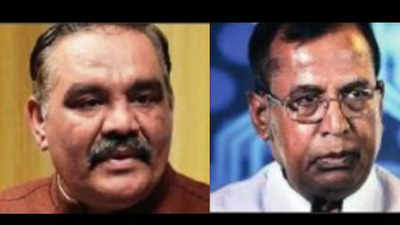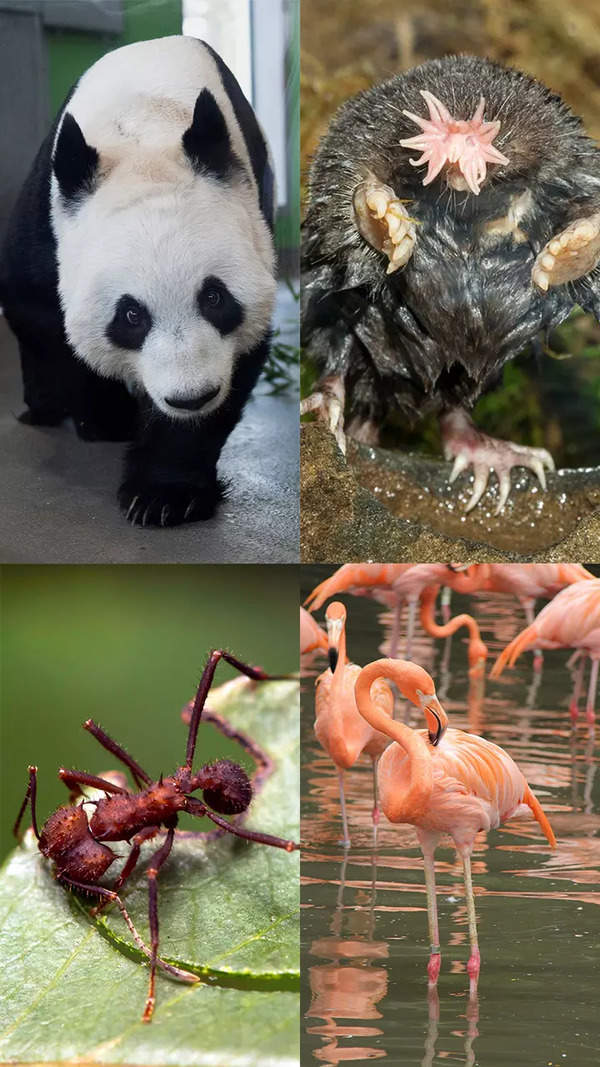- News
- City News
- chandigarh News
- How parties juggle class, caste & community in Punjab
Trending
How parties juggle class, caste & community in Punjab
The 2022 assembly poll saw class beating caste & community issues as AAP’s free 300 units of power was the game changer. Two years later, the three factors are back into play in Lok Sabha polls, with class again having the edge

In the last 10 years, BJP has made a lot of efforts to get Dalits on its side. Elevating firsttime MPs Vijay Sampla and Som Parkash, both belonging to Addharmi/Ravidasia community, as Union ministers of state in 2014 and 2019, respectively
Ten years ago when Aam Aadmi Party took hold in Punjab, ground was fertile as the state had shown initial potential during the 2012 assembly elections to go beyond bipolar contests between Shiromani Akali Dal-BJP and Congress.
Punjabi diaspora, largely Sikhs, displayed its yearning for change through Manpreet Badal-led PPP, when it ended in failure. After the 2012 poll, restlessness on Sikh issues was palpable first on Balwant Singh Rajoana’s scheduled hanging and then on Bandi Singhs (Sikh prisoners).Amidst this, AAP projected prominent faces identifying with Sikh issues pertaining to 1984, highlighted governance issues and the drugs menace and drew support from all sections, across communities and castes. The biggest push came from diaspora and despite its skeletal organisation, AAP won four seats with one-fourth of vote share.
After 2014, Punjab’s political landscape was three-cornered till farm movement forced a breakup between Akali Dal and BJP in 2020. In second and third quarter of 2021, AAP used Bargari sacrilege and Behbal Kalan issues to its advantage but these issues were left behind as it rode on sentiment of change among people and gained momentum through its “guarantees” from 300 units of free power to monthly Rs 1,000 to every woman. AAP gained support across castes, communities and classes and every faultline was transcended as big guns of other parties were decimated.
After the 2022 poll, caste and community issues were blunted as class trumped them on free 300 units of electricity.
Balancing caste with class
The caste gambit played by Punjab’s then ruling Congress party in the 2022 poll failed when despite appointing Charanjit Singh Channi as the chief minister and later making him the CM face failed to consolidate
Congress could win only five of 34 reserved seats and Channi lost both seats he contested as Dalits too responded to the AAP’s call of ‘badlav.’
What worked for AAP in 2022 was the strong desire of people for a qualitative shift in Punjab politics, which was fanned by the 2020-21 farm movement, and its two “guarantees.”
Just as caste failed in the 2022 poll, class seems to be a bigger factor in this Lok Sabha poll. Even now, 300 units of free power is the single biggest issue favouring AAP, considerably blunting caste and community factors. It is working in economically-weaker sections of upper castes too. Interestingly, the criticism of this freebie is more on a class basis.
The Congress govt had also given free electricity with riders to economicallyweaker SCs and other backward classes (OBCs) before AAP came to power and lifted all the riders, except the limit of 300 units. With this, free power started working across castes on a class basis.
That this economic class factor is at play across castes in favour of AAP due to 300 units of free power is acknowledged even by politicians of opposition parties and workers at grassroots. In fact, as AAP has created a constituency for itself based on class, this is becoming its cover against all odds, including questions on its performance on other fronts – from drugs to unemployment and illegal mining.
Interestingly, the class politics of Left parties failed in Punjab long ago, especially after 1984, and they remain on the margins of the political spectrum in the state. By introducing this sop as a straight measure without complicated economic articulation or jargon, AAP turned it into a winning factor.
How BJP is trying to navigate Dalit riddle
BJP in Punjab expects consolidation of Hindu voters in Punjab as it is contesting on its own after more than two decades. Other parties are wary as Hindus make 38.49% of the population and Sikh voters appear to be in a disarray. However, there are layers and blocs within Punjabi Hindus and ‘Hindu consolidation’ has essentially meant upper caste Hindus.
Despite BJP’s success in winning over backward classes and Dalits in other states or at least major sections among them, Punjabi Dalits, who make around one-third of the state’s population, have so far remained a challenge for the saffron party.
In Punjab, caste contradictions exist but they are not as deep and wide as in other northern states, especially as influence of Sikhism makes Punjab different. At times, religious identity across castes also decides political behaviour. This is true for Sikhs across castes as well as for upper-caste Hindus, whose caste becomes secondary when they vote as ‘Sikh bloc’ or ‘Hindu bloc.’
In the last 10 years, BJP has made a lot of efforts to get Dalits on its side. Elevating first-time MPs Vijay Sampla and Som Parkash, both belonging to Ad-dhar mi/Ravidasia community, as Union ministers of state in 2014 and 2019, respectively, and then appointing Sampla as the first Dalit BJP state president were part of this exercise. However, its success has been limited to a few pockets till now.
Its challenge comes from two levels as the majority of Dalits are Sikhs – comprising 19.4% of the total population and Hindu Dalits, who comprise 12.4% of the total population, are not adherents of Hindutva politics. Thus, Hindus who are 38.49% of Punjab’s population are not helping the BJP as such.
Uniquely, a major chunk of Hindu Dalits, especially the Ravidasia/Addharmi community, mention their religion as Hindu officially but are closer to Sikhs in religious practices. “Except for registering as Hindus in official records, a major section of Ravidasia/ Ad-dharmis prefers to use caste identity instead of Hindu religious identity. In religious practices, they are closer to Sikhs than upper caste Hindus and their shrines are separate. This is a major factor in their politics too,” says Kulwinder Bagha, former sarpanch of Bolina village near Jalandhar, who belongs to the same community.
Started in the 1920s, Ad-dharm was recognised as a religion in the 1931 Census but was taken as a caste name for the community working with leather after Partition. The Ad-Dharmis along with the other half of the caste-community, Ramdasia Sikhs, dominate the Dalit spaces and influence their narrative in a major way. This remains a barrier in their becoming a part of the larger Hindu pantheon, the project in which Rashtriya Swayamsevak Sangh and BJP have succeeded in other states.
Well aware of challenges in Punjab, BJP is trying to overcome these through aggressive outreach efforts not only among Hindu SCs but also among Sikh SCs with varying methods.
Inquiries from different quarters within BJP and Dalit circles reveal that apart from overt efforts, BJP also operates at a subtle level. It is continuing its attempts to woo the Ravidasia/Ad-dharmi community and is also attempting replication of its successful experiment in Uttar Pradesh, where it managed to get nonJatav Dalits on its side even as Jatavs, the biggest community among UP SCs, largely identify with the Bahujan Samaj Party.
In Punjab, BSP is largely a part of the Ravidasia/Ad-dharmi community even as it is trying to rope in other communities.
Ad-dharmi/Ravidasia and Mazhabi Sikh/Balmikis compete with each other in Dalit social and political spaces and the former dominate as they are economically and socially better placed.
Amid these fault-lines, BJP appears to be making strong efforts to make inroads in the Mazhabi Sikh/Balmiki community who come from the lowest step of the caste ladder.
Apart from fielding Mazhabi candidate Hans Raj Hans from Faridkot and Balmiki candidate Gejja Ram from Fatehgarh Sahib, BJP has also fielded a Mazhabi Sikh, Mandeep Singh Manna from Khadoor Sahib seat.
Opportunities for BJP
Originally, Punjab SCs were a strong support base of Congress and Shiromani Akali Dal. Congress had its base across castes and religious identities and SAD had support of a considerable section of SC Sikhs and managed to make inroads among Hindu SCs after coming to power in 2007. BSP disrupted Congress’s easy-going relationship with SCs and weakened it by taking away a section of Ravidasia/Ad dharmi voters.
After it entered Punjab, AAP made inroads across communities and castes and it is the only party with a wider social base like Congress. AAP is attempting to blunt caste with class through its freebies even as BJP has its own idiom and class of ‘labharthi’ (beneficiaries).
It is in this situation that BJP is trying to woo sections of Dalits as it navigates challenges while looking at opportunities.
At least two BJP candidates have tried to play the caste card by talking on Jat Sikh versus Dalits divide. On April 25, when farmers gathered to protest against him in Jalandhar, BJP candidate Sushil Rinku called them “gundas” and “anti-Dalit” and claimed that they were there to insult Dalits. Rinku, who belongs to the Ravidasia community, urged Dalits to boycott these “anti-Dalit farmers.” In Punjab, most of the farmers come from the Jat Sikh community.
BJP’s Faridkot candidate Hans Raj Hans, who has a Mazhabi Sikh background, after facing several protests by farmers, said that his people were also heirs of Baba Jiwan Singh (a much respected Sikh warrior from the same caste background, who brought the severed head of Ninth Sikh Master Guru Teg Bahadur after his execution in Delhi to Guru Gobind Singh) it seemed not just an impulsive reaction but a careful positioning of Jat Sikh versus Mazhabi Sikhs.
Reacting to Hans’ statements, Pendu Mazdoor Union, largely representing rural Dalit labourers, repeatedly issued statements alleging that BJP was playing its divisive agenda through its candidates and there was an attempt to create the wedge between farmers and Dalit labourers.
Despite their same caste background, there are differences, mainly of religious identity and practices, between Mazhabi Sikhs and Hindu-Balmikis, the former are largely in rural areas and involved in farm labour and the latter are in urban areas. For Mazhabi Sikhs, it is only the caste card that can work, but for BalmikiHindu identity, BJP is already working at the level of religious identity by repeatedly highlighting that it named Ayodhya airport after Maharishi Valmiki.
The caste factor among Mazhabi Sikhs/Balmikis has the potential to act on two levels as they can be positioned against Jat Sikhs and can compete with Ad-dharmi/Ravidasias in the Dalit space. “BJP is making strong attempts for outreach among Balmikis. Though earlier also there were some people in our community aligned to them, this time their attempts appear unprecedented,” said Darshan Ratan Ravan, founder and head of Adi Dharam Samaj (ADS), a major organisation of Balmiki community in Punjab. He said that like other SC communities, apprehensions of changes in the Constitution among Balmikis also had percolated deep.
When BJP fielded former Lok Sabha deputy speaker Charanjit Singh Atwal’s son Inder Iqbal Singh Atwal, a Mazhabi Sikh and a former SAD MLA, in Jalandhar bypoll last year, his caste card worked among sections of Mazhabi Sikhs/Balmikis.
“Things are much different in Punjab due to Sikh Gurus’ influence across castes but still there are caste contradictions between upper and lower castes and within Dalits. There are regular discussions within well-informed Dalit circles and activists on how to tackle the emerging challenge when attempts are being made to widen the fault-lines for political purposes,” said Gian Chand, vicepresident of All India Ad-Dharam Mission.
For now, the perception of ‘change in the Constitution’ which seems to have travelled deep and wide among Dalits, can become the biggest roadblock for BJP.
SAD forgets its work for SC Sikhs
As BJP is also involved in a massive effort to make inroads among Sikh SCs, who are 19.4% of the total population of Punjab, Akali Dal leaders have mostly skipped any mention in their campaign of the party’s historic role and that of its stalwarts in getting reservation for all the SC Sikhs in the mid-1950s, as originally, they were not covered in 1950.
Punjabi diaspora, largely Sikhs, displayed its yearning for change through Manpreet Badal-led PPP, when it ended in failure. After the 2012 poll, restlessness on Sikh issues was palpable first on Balwant Singh Rajoana’s scheduled hanging and then on Bandi Singhs (Sikh prisoners).Amidst this, AAP projected prominent faces identifying with Sikh issues pertaining to 1984, highlighted governance issues and the drugs menace and drew support from all sections, across communities and castes. The biggest push came from diaspora and despite its skeletal organisation, AAP won four seats with one-fourth of vote share.
After 2014, Punjab’s political landscape was three-cornered till farm movement forced a breakup between Akali Dal and BJP in 2020. In second and third quarter of 2021, AAP used Bargari sacrilege and Behbal Kalan issues to its advantage but these issues were left behind as it rode on sentiment of change among people and gained momentum through its “guarantees” from 300 units of free power to monthly Rs 1,000 to every woman. AAP gained support across castes, communities and classes and every faultline was transcended as big guns of other parties were decimated.
After the 2022 poll, caste and community issues were blunted as class trumped them on free 300 units of electricity.
Now that BJP with massive resources and capacity to play all sorts of cards is pushing to make Punjab’s political landscape four-cornered, caste and community cards are important again. Here is an attempt to decipher how class, caste and community cards can work in this and afterwards:
Balancing caste with class
The caste gambit played by Punjab’s then ruling Congress party in the 2022 poll failed when despite appointing Charanjit Singh Channi as the chief minister and later making him the CM face failed to consolidate
Dalit vote in its favour.
Congress could win only five of 34 reserved seats and Channi lost both seats he contested as Dalits too responded to the AAP’s call of ‘badlav.’
What worked for AAP in 2022 was the strong desire of people for a qualitative shift in Punjab politics, which was fanned by the 2020-21 farm movement, and its two “guarantees.”
Just as caste failed in the 2022 poll, class seems to be a bigger factor in this Lok Sabha poll. Even now, 300 units of free power is the single biggest issue favouring AAP, considerably blunting caste and community factors. It is working in economically-weaker sections of upper castes too. Interestingly, the criticism of this freebie is more on a class basis.
The Congress govt had also given free electricity with riders to economicallyweaker SCs and other backward classes (OBCs) before AAP came to power and lifted all the riders, except the limit of 300 units. With this, free power started working across castes on a class basis.
That this economic class factor is at play across castes in favour of AAP due to 300 units of free power is acknowledged even by politicians of opposition parties and workers at grassroots. In fact, as AAP has created a constituency for itself based on class, this is becoming its cover against all odds, including questions on its performance on other fronts – from drugs to unemployment and illegal mining.
Interestingly, the class politics of Left parties failed in Punjab long ago, especially after 1984, and they remain on the margins of the political spectrum in the state. By introducing this sop as a straight measure without complicated economic articulation or jargon, AAP turned it into a winning factor.
How BJP is trying to navigate Dalit riddle
BJP in Punjab expects consolidation of Hindu voters in Punjab as it is contesting on its own after more than two decades. Other parties are wary as Hindus make 38.49% of the population and Sikh voters appear to be in a disarray. However, there are layers and blocs within Punjabi Hindus and ‘Hindu consolidation’ has essentially meant upper caste Hindus.
Despite BJP’s success in winning over backward classes and Dalits in other states or at least major sections among them, Punjabi Dalits, who make around one-third of the state’s population, have so far remained a challenge for the saffron party.
In Punjab, caste contradictions exist but they are not as deep and wide as in other northern states, especially as influence of Sikhism makes Punjab different. At times, religious identity across castes also decides political behaviour. This is true for Sikhs across castes as well as for upper-caste Hindus, whose caste becomes secondary when they vote as ‘Sikh bloc’ or ‘Hindu bloc.’
In the last 10 years, BJP has made a lot of efforts to get Dalits on its side. Elevating first-time MPs Vijay Sampla and Som Parkash, both belonging to Ad-dhar mi/Ravidasia community, as Union ministers of state in 2014 and 2019, respectively, and then appointing Sampla as the first Dalit BJP state president were part of this exercise. However, its success has been limited to a few pockets till now.
Its challenge comes from two levels as the majority of Dalits are Sikhs – comprising 19.4% of the total population and Hindu Dalits, who comprise 12.4% of the total population, are not adherents of Hindutva politics. Thus, Hindus who are 38.49% of Punjab’s population are not helping the BJP as such.
Uniquely, a major chunk of Hindu Dalits, especially the Ravidasia/Addharmi community, mention their religion as Hindu officially but are closer to Sikhs in religious practices. “Except for registering as Hindus in official records, a major section of Ravidasia/ Ad-dharmis prefers to use caste identity instead of Hindu religious identity. In religious practices, they are closer to Sikhs than upper caste Hindus and their shrines are separate. This is a major factor in their politics too,” says Kulwinder Bagha, former sarpanch of Bolina village near Jalandhar, who belongs to the same community.
Started in the 1920s, Ad-dharm was recognised as a religion in the 1931 Census but was taken as a caste name for the community working with leather after Partition. The Ad-Dharmis along with the other half of the caste-community, Ramdasia Sikhs, dominate the Dalit spaces and influence their narrative in a major way. This remains a barrier in their becoming a part of the larger Hindu pantheon, the project in which Rashtriya Swayamsevak Sangh and BJP have succeeded in other states.
Well aware of challenges in Punjab, BJP is trying to overcome these through aggressive outreach efforts not only among Hindu SCs but also among Sikh SCs with varying methods.
Inquiries from different quarters within BJP and Dalit circles reveal that apart from overt efforts, BJP also operates at a subtle level. It is continuing its attempts to woo the Ravidasia/Ad-dharmi community and is also attempting replication of its successful experiment in Uttar Pradesh, where it managed to get nonJatav Dalits on its side even as Jatavs, the biggest community among UP SCs, largely identify with the Bahujan Samaj Party.
In Punjab, BSP is largely a part of the Ravidasia/Ad-dharmi community even as it is trying to rope in other communities.
Ad-dharmi/Ravidasia and Mazhabi Sikh/Balmikis compete with each other in Dalit social and political spaces and the former dominate as they are economically and socially better placed.
Amid these fault-lines, BJP appears to be making strong efforts to make inroads in the Mazhabi Sikh/Balmiki community who come from the lowest step of the caste ladder.
Apart from fielding Mazhabi candidate Hans Raj Hans from Faridkot and Balmiki candidate Gejja Ram from Fatehgarh Sahib, BJP has also fielded a Mazhabi Sikh, Mandeep Singh Manna from Khadoor Sahib seat.
Opportunities for BJP
Originally, Punjab SCs were a strong support base of Congress and Shiromani Akali Dal. Congress had its base across castes and religious identities and SAD had support of a considerable section of SC Sikhs and managed to make inroads among Hindu SCs after coming to power in 2007. BSP disrupted Congress’s easy-going relationship with SCs and weakened it by taking away a section of Ravidasia/Ad dharmi voters.
After it entered Punjab, AAP made inroads across communities and castes and it is the only party with a wider social base like Congress. AAP is attempting to blunt caste with class through its freebies even as BJP has its own idiom and class of ‘labharthi’ (beneficiaries).
It is in this situation that BJP is trying to woo sections of Dalits as it navigates challenges while looking at opportunities.
At least two BJP candidates have tried to play the caste card by talking on Jat Sikh versus Dalits divide. On April 25, when farmers gathered to protest against him in Jalandhar, BJP candidate Sushil Rinku called them “gundas” and “anti-Dalit” and claimed that they were there to insult Dalits. Rinku, who belongs to the Ravidasia community, urged Dalits to boycott these “anti-Dalit farmers.” In Punjab, most of the farmers come from the Jat Sikh community.
BJP’s Faridkot candidate Hans Raj Hans, who has a Mazhabi Sikh background, after facing several protests by farmers, said that his people were also heirs of Baba Jiwan Singh (a much respected Sikh warrior from the same caste background, who brought the severed head of Ninth Sikh Master Guru Teg Bahadur after his execution in Delhi to Guru Gobind Singh) it seemed not just an impulsive reaction but a careful positioning of Jat Sikh versus Mazhabi Sikhs.
Reacting to Hans’ statements, Pendu Mazdoor Union, largely representing rural Dalit labourers, repeatedly issued statements alleging that BJP was playing its divisive agenda through its candidates and there was an attempt to create the wedge between farmers and Dalit labourers.
Despite their same caste background, there are differences, mainly of religious identity and practices, between Mazhabi Sikhs and Hindu-Balmikis, the former are largely in rural areas and involved in farm labour and the latter are in urban areas. For Mazhabi Sikhs, it is only the caste card that can work, but for BalmikiHindu identity, BJP is already working at the level of religious identity by repeatedly highlighting that it named Ayodhya airport after Maharishi Valmiki.
The caste factor among Mazhabi Sikhs/Balmikis has the potential to act on two levels as they can be positioned against Jat Sikhs and can compete with Ad-dharmi/Ravidasias in the Dalit space. “BJP is making strong attempts for outreach among Balmikis. Though earlier also there were some people in our community aligned to them, this time their attempts appear unprecedented,” said Darshan Ratan Ravan, founder and head of Adi Dharam Samaj (ADS), a major organisation of Balmiki community in Punjab. He said that like other SC communities, apprehensions of changes in the Constitution among Balmikis also had percolated deep.
When BJP fielded former Lok Sabha deputy speaker Charanjit Singh Atwal’s son Inder Iqbal Singh Atwal, a Mazhabi Sikh and a former SAD MLA, in Jalandhar bypoll last year, his caste card worked among sections of Mazhabi Sikhs/Balmikis.
“Things are much different in Punjab due to Sikh Gurus’ influence across castes but still there are caste contradictions between upper and lower castes and within Dalits. There are regular discussions within well-informed Dalit circles and activists on how to tackle the emerging challenge when attempts are being made to widen the fault-lines for political purposes,” said Gian Chand, vicepresident of All India Ad-Dharam Mission.
For now, the perception of ‘change in the Constitution’ which seems to have travelled deep and wide among Dalits, can become the biggest roadblock for BJP.
SAD forgets its work for SC Sikhs
As BJP is also involved in a massive effort to make inroads among Sikh SCs, who are 19.4% of the total population of Punjab, Akali Dal leaders have mostly skipped any mention in their campaign of the party’s historic role and that of its stalwarts in getting reservation for all the SC Sikhs in the mid-1950s, as originally, they were not covered in 1950.
End of Article
FOLLOW US ON SOCIAL MEDIA











